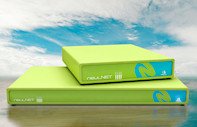Do we need another radio technology to cope with M2M growth? UK start up says we do
A UK company that has devised technology to use white space spectrum to connect devices and machines has said it is addressing an opportunity that is as big as the entire current mobile industry.
Neul, formed by ex-CSR executives, outlined today its plans to develop products and license radio technology for use in white space spectrum, the unused spectrum that sits in and around TV spectrum. It intends to use the technology for the delivery of data to billions of connected devices.
The company hopes to convince standards bodies to adopt its “Weightless” radio technology as the standard for white space connectivity, and is inviting other companies to join its Weightless standards development project.
The process will be co-ordinated within the secretariat of Cambridge Wireless.
James Collier, CEO of Neul, said the company has existing products available and shipping for assessment and pilots, and is moving to have commercially-ready technology by the first quarter of 2012. Collier said that by addressing a market that will encompass tens of billions of connected devices, Neul is targetting a market that “has a dollar value as big as the current cellular industry.”
So how does it work? Well, instead of using existing 2G, 3G, 4G or WiFi networks to hook up the projected billions of connected devices (cars, meters, media tablets, health monitors, fridges etc etc) Neul proposes using the 150Mhz of free, unlicensed spectrum that sits in and around spectrum used by TV transmitters.
An operator would roll out base stations, a bit like in the cellular model, to provide coverage to devices within range over available white space spectrum. As TV spectrum sits in th 400-800MHz range across the world, it naturally has good coverage and building penetration characteristics, Collier said, making it well suited to M2M applications.
The company builds a coverage and toplogy database of TV spectrum, working out which channels are used in which locations. By doing so it works out which channels are free for use for other purposes, in a manner that doesn’t degrade either service. When a base station is activated, it works out its location via GPS, reports to a central database, and is populated with the correct settings for operation. The technology could provide up to 16Mbps connectivity per 8MHz TV channel over a (maximum) 10km range, Neul said. In fact, data rates will be very flexible depending on range, application and environment.
Figures from Neul itself purported to show that the UK could be covered to 99.7% coverage by 6,000 base stations – assuming a mid-range coverage-capacity trade-off. Each base station could support 100,000 connected devices within its 4km radius, Neul claimed. That sort of rollout would require a capex of $50 million, Collier said, by any party interested in rolling out what would be in effect a UK-wide M2M network.
Although M2M, or embedded connectivity, is a massive opportunity, it comes with certain restrictions. Terminals must be able to operate for a decade or more, off battery or with very lower power consumption, and must be very low cost. There must be little or no signaling overhead, and units must operate in a very “light” manner on the network (ie no heavy packet overheads). They must also be small and simple to use.
So who would roll out a “Weightless” network in white space spectrum – and why? Collier said that the most likely to do so are the telcos, but in theory there would be nothing to stop anyone with a large-ish amount of real estate operating as a wholesale connectivity provider.
As for why, Collier stated that current wireless access technologies are unsuited to providing the sort of long term, low ARPU, mass volume connectivity required by M2M applications. 2G and 3G spectrum is being refarmed, making the management of M2M devices problematical, and also coverage is patchy. 4G could do it, but it is a technology that sits in expensive licensed spectrum, and operators will require a much higher rate of return that M2M can provide, Collier said.
Instead, a new radio network is required that can meet the low power, low cost, high volume requirements of M2M. With relatively low capex requirements and predictions of M2M requirements for metering alone, the ROI on a network could come within two years, Collier claimed.
In time, Neul sees itself as licensing its IP to the major chip companies, such as Qualcomm and TI. Neul’s target is for the integration cost of a “Weightless” chip into a device to be just $1 by 2015. Currently it would cost $5 per device, Collier said.
Neul’s CEO Collier and COO Glenn Collinson are both ex-CSR execs, while CTO William Webb is a former Director of Technology Resources at Ofcom. The company claims to have moved from conception of the idea to today’s launch in nine months, and says it is the first company to produce specifications for a white space wireless network.



